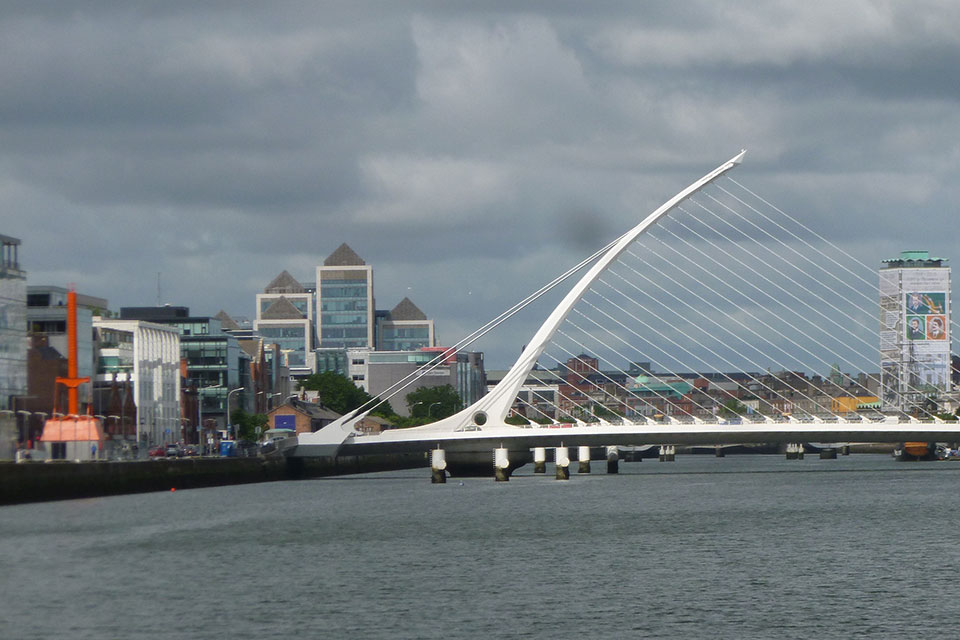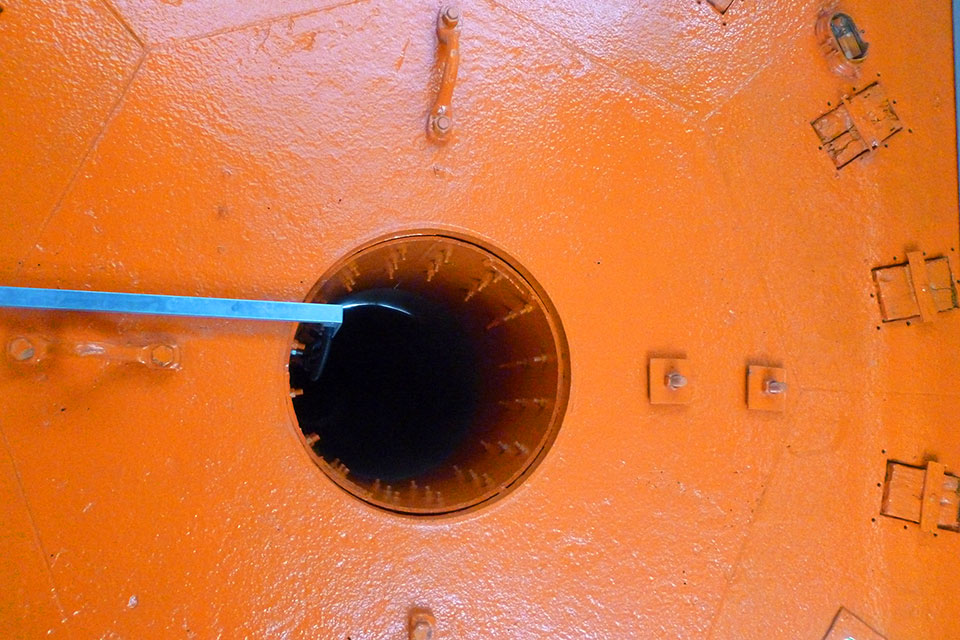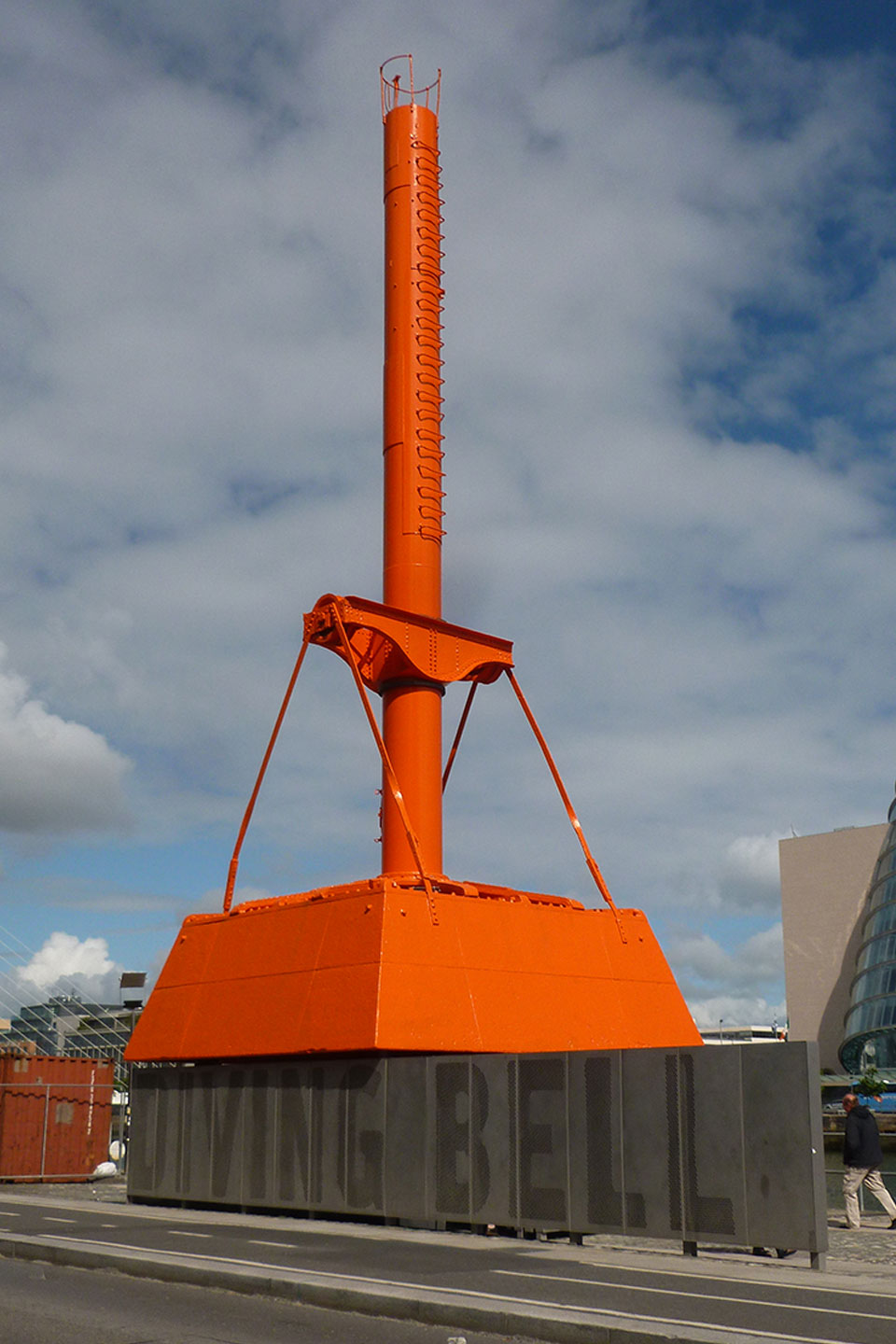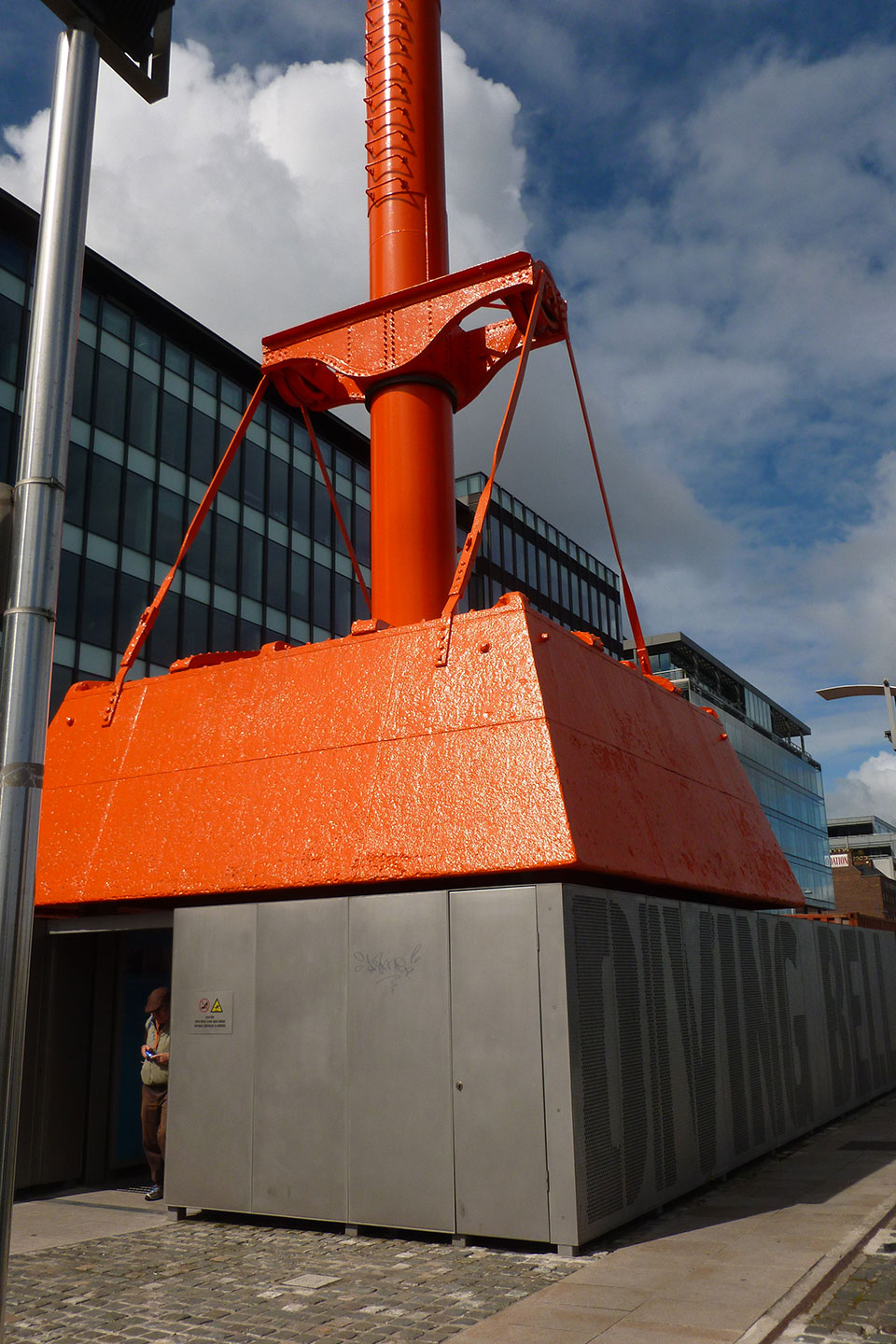Dublin Port Diving Bell
In the 1860s, more traffic and bigger ships led to a requirement for deeper water and bigger retaining walls / quaysides in Dublin harbour. The conventional solution was to create the necessary working conditions by excluding water using coffer dams. Dublin’s Chief Engineer of the time, George Halpin, Jr. intended to use this technique but his young assistant Bindon
Blood Stoney proposed the alternative of working under water – a quicker and cheaper solution. The young man’s ideas prevailed and he went on to be the Chief Engineer of the Port for 42 years. The idea was to use precast concrete blocks, each weighing 350 tons. These would need to be lifted and placed in position, and the river bed prepared underwater. Stoney designed a barge that lifted by a combination of tide and ballasting and a diving bell that enabled men to work on the river bed to level the ground for the blocks. The first block was cast in 1871. By 1884, 1½ kilometres of quayside had been constructed.
Even the Great Eastern paid a call in 1883. Remarkably, the diving bell was used for 92 years
until 1957 when it was laid aside. It then survived long enough for its significance to be recognised. In 2015 it was set up in a prominent position on Sir John Rogerson’s Quay as a monument and interpretative centre. This has been done very well and it is quite an eye-catcher, particularly when flood-lit. The 20 feet square bell has been used as a roof to form a small building with very informative interpretative panels. The floor is an open grid above running water and the 3 feet diameter access tube, rising 40 feet from the bell, makes the structure unmissable.
An extract from Newcomen Links 239 ©The Newcomen Society 2018




